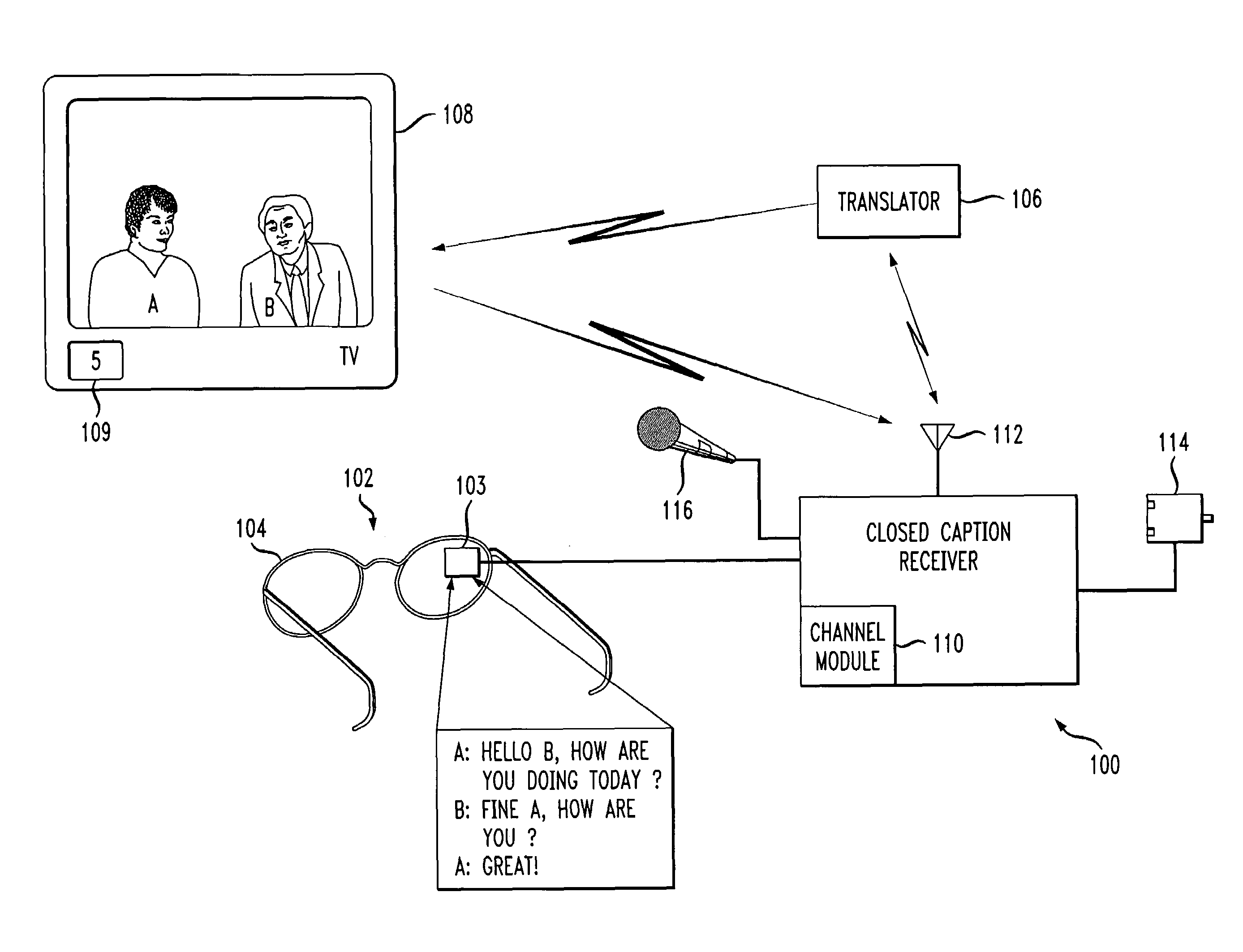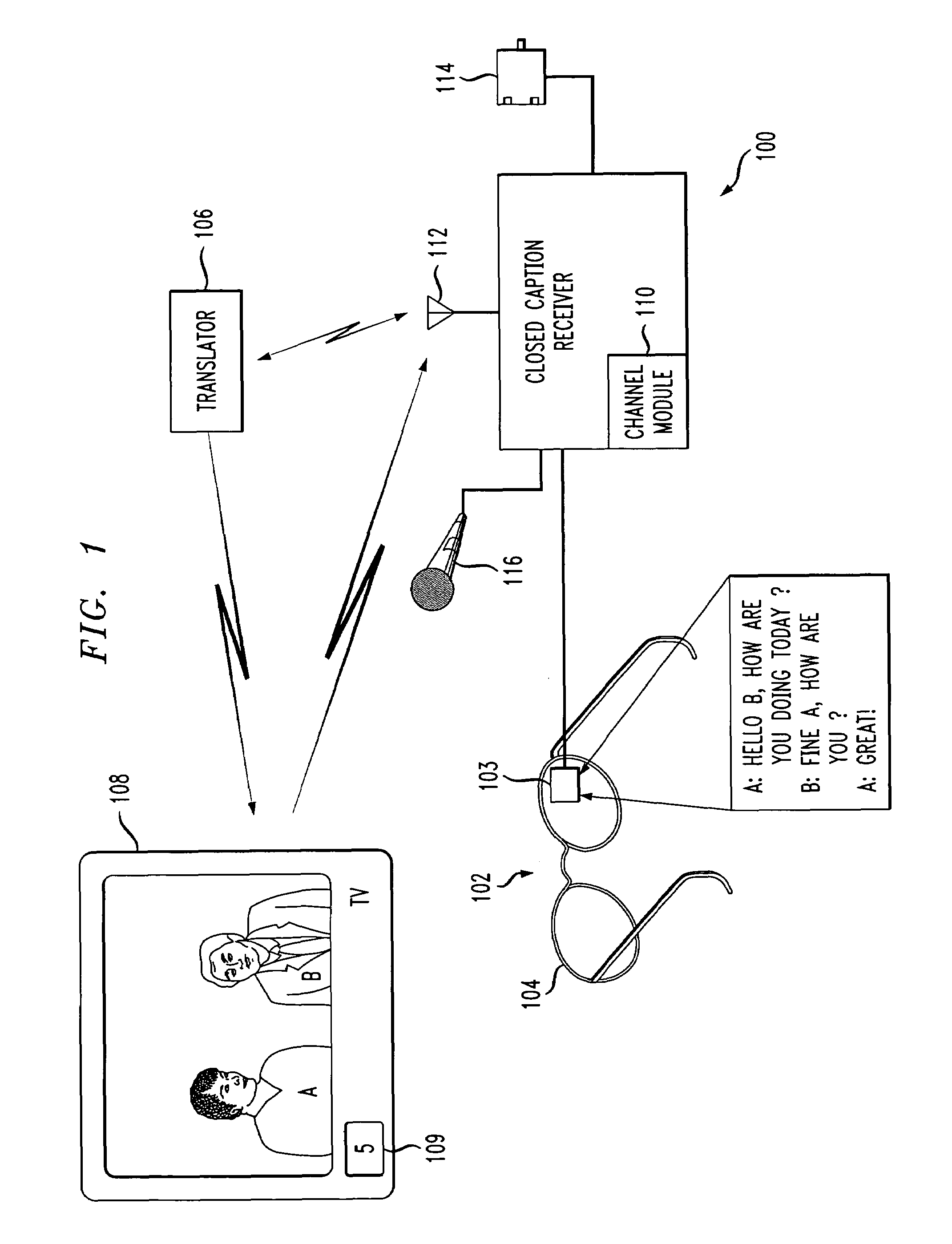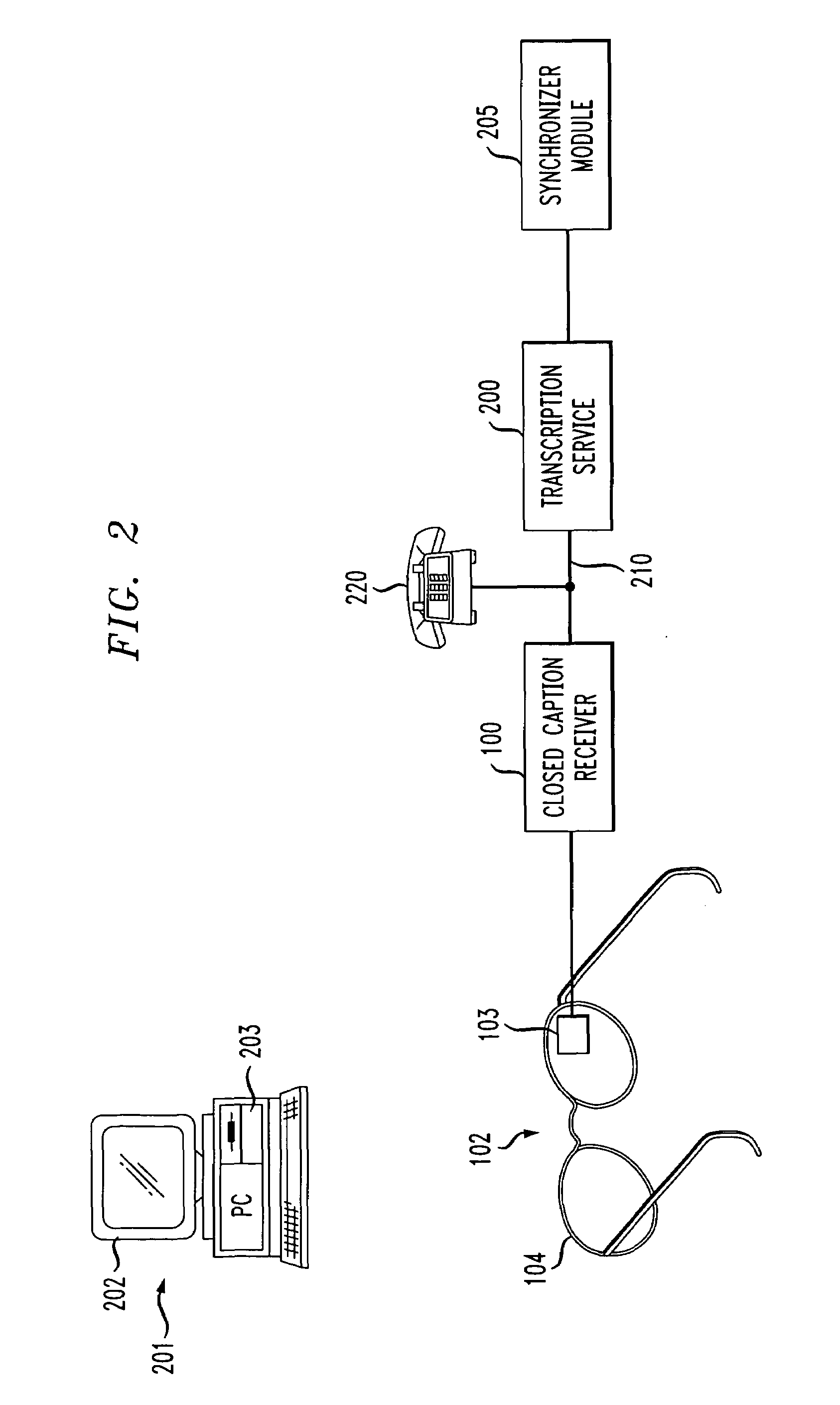Universal closed caption portable receiver
a receiver and universal technology, applied in the field of universal closed caption portable receiver, can solve the problems of not being able to display closed captions, not being able to operate independently from, or autonomously with respect to, the television, and the host may not feel comfortable asking the host to activate the closed captioning chip
- Summary
- Abstract
- Description
- Claims
- Application Information
AI Technical Summary
Benefits of technology
Problems solved by technology
Method used
Image
Examples
first embodiment
[0028]Referring initially to FIG. 1, a block diagram illustrates a closed caption receiving device and associated environment according to the present invention. As shown, a portable and universal closed caption receiving device or receiver 100 operates in conjunction with a head mounted display system 102 coupled thereto. As illustrated, the head mounted display system 102 comprises a microdisplay 103 mounted on a pair of eyeglasses 104. While a user is not expressly shown, it is to be understood that the user wears the eyeglasses on his or her face in a normal manner and also preferably carries the receiver 100 on his or her body, e.g., attaches the receiver to a waist belt.
[0029]It is to be appreciated that the invention is not limited to use with any particular head mounted display system but is more generally applicable to use with any separate display system that may be carried by the user. For instance, the eyeglass-based microdisplay system 102 generally depicted in the figu...
second embodiment
[0042]Referring now to FIG. 2, a block diagram illustrates a closed caption receiving device and associated environment according to the present invention. As shown in accordance with FIG. 2, instead of the environment including a television set, a personal computer (PC) 201 is used as an example. The computer includes a monitor 202 and a device 203, e.g., a a CD-ROM or DVD (e.g., a digital video disc) player, that enables the computer to play a movie or other program on the monitor 202. As previously mentioned, computers often do not have closed captioning capabilities. Again, as in FIG. 1, the closed caption receiving device is generally illustrated as block 100, while the head mounted display system is generally illustrated as element 102 (including display 103 and glasses 104).
[0043]In this embodiment, the receiver 100 is connected to a telephone channel 210 to which a telephone 220 is also connected. The telephone 220 and receiver 100 are connected with a transcription service ...
third embodiment
[0049]Referring now to FIG. 3, a block diagram illustrates a closed caption receiving device and associated environment according to the present invention. Particularly, FIG. 3 explains how a closed caption receiving device of the invention would operate in a movie theater. As shown, block 310 represents a movie theater screen. Again, as in FIG. 1, the closed caption receiving device is generally illustrated as block 100, while the head mounted display system is generally illustrated as element 102 (including display 103 and glasses 104). Also, as in FIG. 2, the transcription service and synchronizer are respectively represented as blocks 200 and 205.
[0050]In this embodiment, the receiver 100 wirelessly communicates with a communication relay device 320. The relay device 320 includes a microphone 330 and is preferably located in the movie theater, or at least in the vicinity of the audio system outputting the audio content of the movie. It is to be appreciated that the overall conce...
PUM
 Login to View More
Login to View More Abstract
Description
Claims
Application Information
 Login to View More
Login to View More - R&D
- Intellectual Property
- Life Sciences
- Materials
- Tech Scout
- Unparalleled Data Quality
- Higher Quality Content
- 60% Fewer Hallucinations
Browse by: Latest US Patents, China's latest patents, Technical Efficacy Thesaurus, Application Domain, Technology Topic, Popular Technical Reports.
© 2025 PatSnap. All rights reserved.Legal|Privacy policy|Modern Slavery Act Transparency Statement|Sitemap|About US| Contact US: help@patsnap.com



